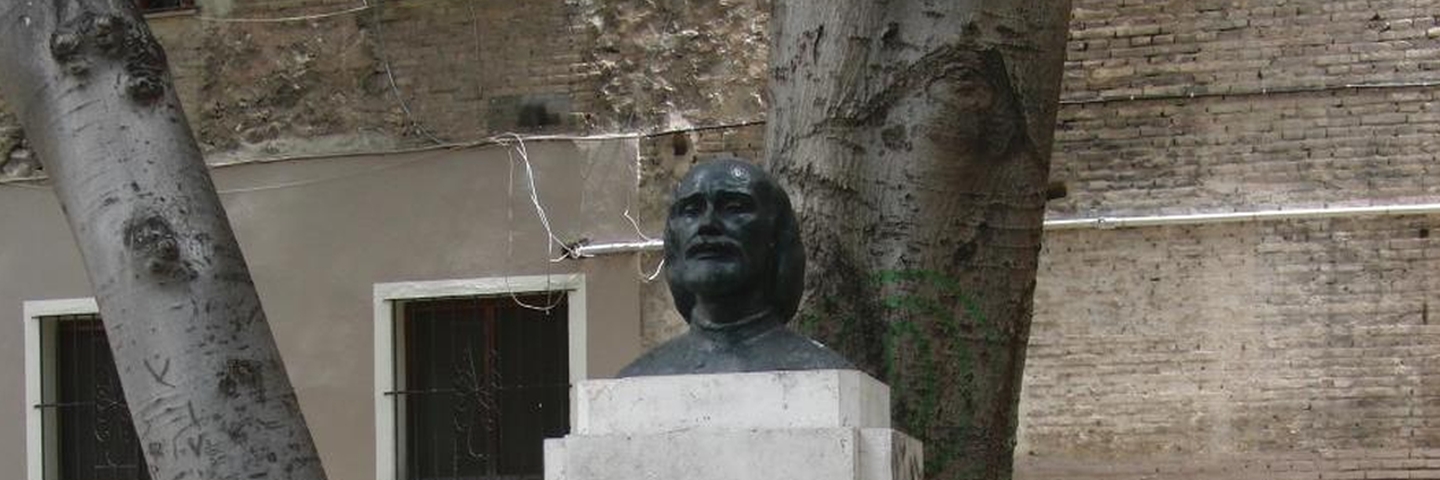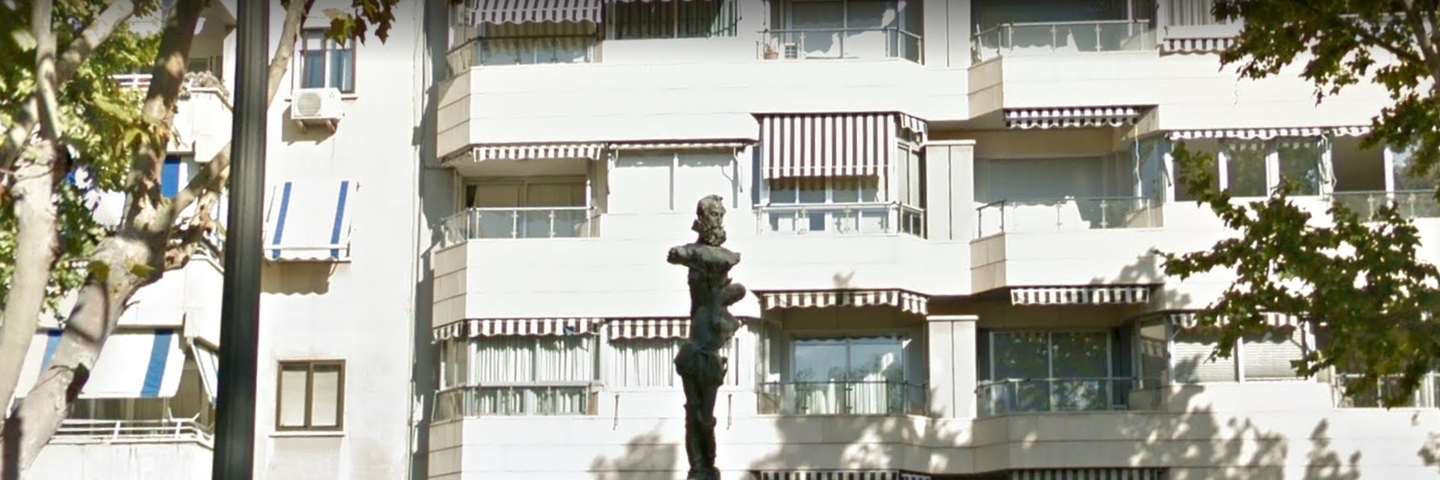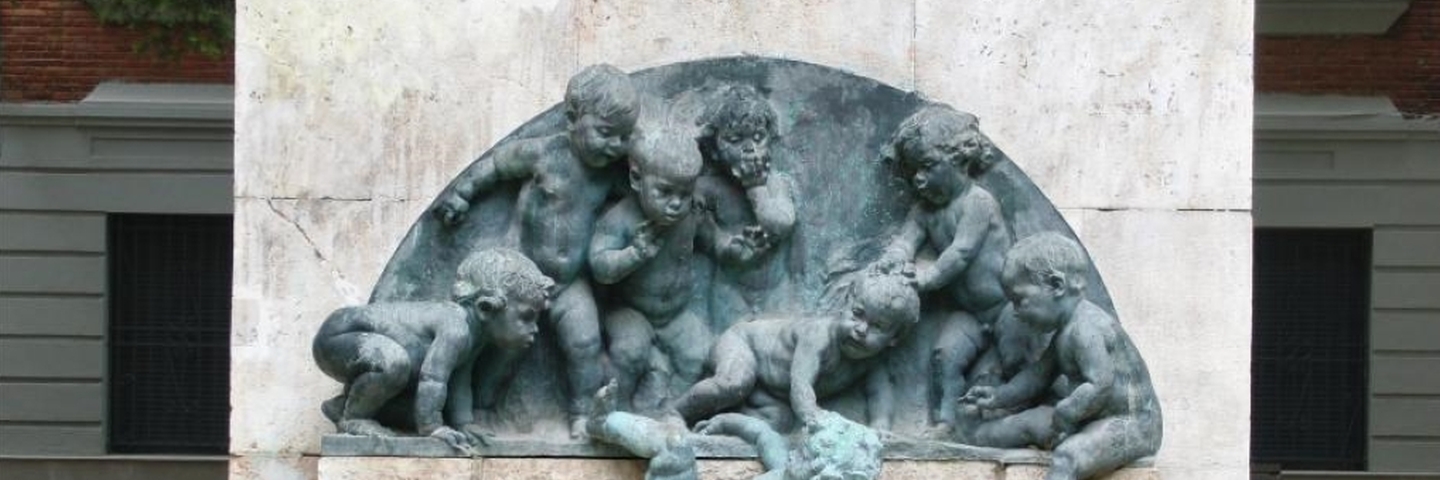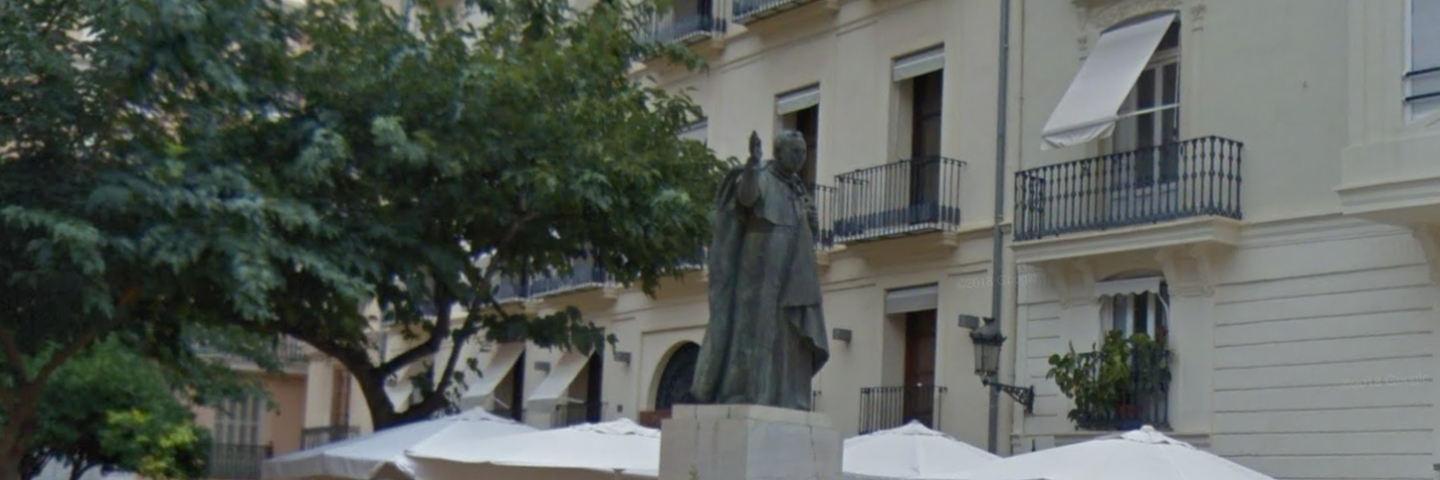In addition to the monument erected in the center of the cloister courtyard of the Literary University, the work of Josep Aixa, included in its monumental review, and those raised -the same- in the courtyard of the Lluís Vives Institute (Old College of Sant Pau), and in front of the Municipal Library of the Plaza de Mainz, works by Alfonso Pérez Plaza.
There is another monument in the city to the great Valencian philosopher and humanist, Joan Lluís Vives, bronze and petri homage, perhaps too modest, consisting of a bronze bust placed on a rectangular section pedestal, sculpture due to the artist, also son of the city, Ramon Mateu Montesinos, professor and academic, laureate with first Medal, who created this work, inaugurated by the Minister of Information and Tourism Manuel Fraga, on October 25, 1966, in the Plaza de los Pinazo, before the Pintor Pinazo, and before the Picadero, tangent to Calle de Colón, next to a landscape garden that centers this square; being noteworthy that another similar monument was placed in the Belgian city of Bruges, where Vives passed in 1512 and one of those that, like Valencia, Paris and Oxford, was the scene of the teachings and studies of Vives, although we must say of Ferrer Olmos, of Valencia “presents in case greater communicability and better disposition than that of Bruges, Placed, by the way, in a very careful place.” In Bruges he met his wife Margarita Valldaura and died there on May 6, 1540, at the age of 48. He was born in Valencia on 7 March of the annus mirabilis of 1492. On the pedestal of the Plaza de los Pinazo, it reads “Valencia to Joan Lluís Vives MCMLXVI”.
From the same sculptor Ramon Mateu, Honorary Academician of San Carlos, who was, there are other important works in Valencia such as the Mare de Déu del Carme, in the Plaza del Portal Nou; the Heart of Jesus, on the staircase of the Town Hall and the Crucified Christ presiding over the repristinate Gothic church of Saint Catherine the Martyr. De Vives, also, monuments in Madrid (National Library) and Barcelona (hall of the University), by other authors.












